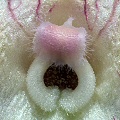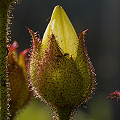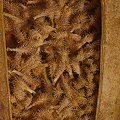Q: How do I propagate my plants by sexual reproduction?
A: There are many methods of propagating plants, but they can be divided into
two broad groups: sexual reproduction and asexual reproduction.
Sexual reproduction means you are using flowers to make seed. Asexual
(or vegetative) reproduction means you are taking some part of the plant and
are coercing it into forming a new plant.
In sexual propagation, you must transfer pollen from a flower's
anthers (i.e. stamen) to a flower's stigmatic surface (i.e. pistil). For definitions of these terms,
look to any introductory botany text book. You would do well to read the FAQ discussion on
how to pollinate a Venus flytrap flower---it is shockingly explicit---or
the FAQ entry on pollinating other carnivorous plant flowers.
When possible, cross pollinate
your carnivorous plants. (Take pollen from one plant, and put it on the stigma
of another plant.) The alternative to cross pollination is self pollination
(or more simply, "selfing"). This means you take pollen from a
flower, and put it on the flower's own stigma.
Just as incest in humans can result in genetic defects, selfing plants
often results in specimens with decreased vigor. (Incidentally, two plants which were asexually propagated
from the same parent are genetically identical, so cross pollinating these two
plants is really just the same as selfing.) Many plants will simply not produce
seed if selfed.
After you pollinate a plant, you must wait and see if it produces seed.
Drosera seeds are usually ready within a few weeks. Sarracenia
seeds take several months before they are mature.
Page citations: Rice, B.A. 2006a; personal observation.




